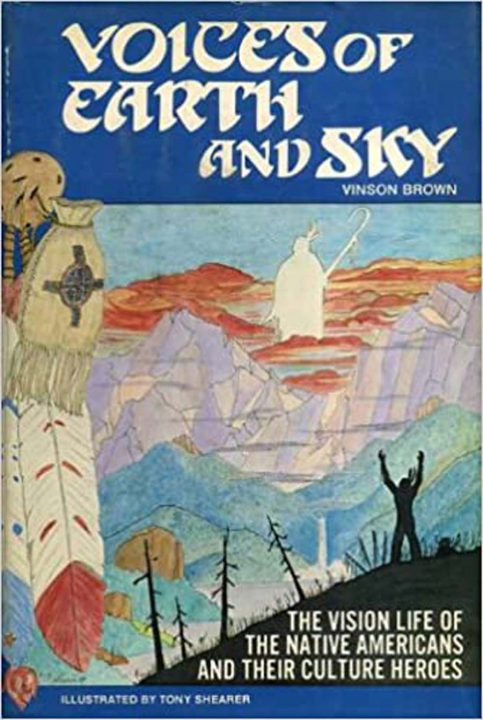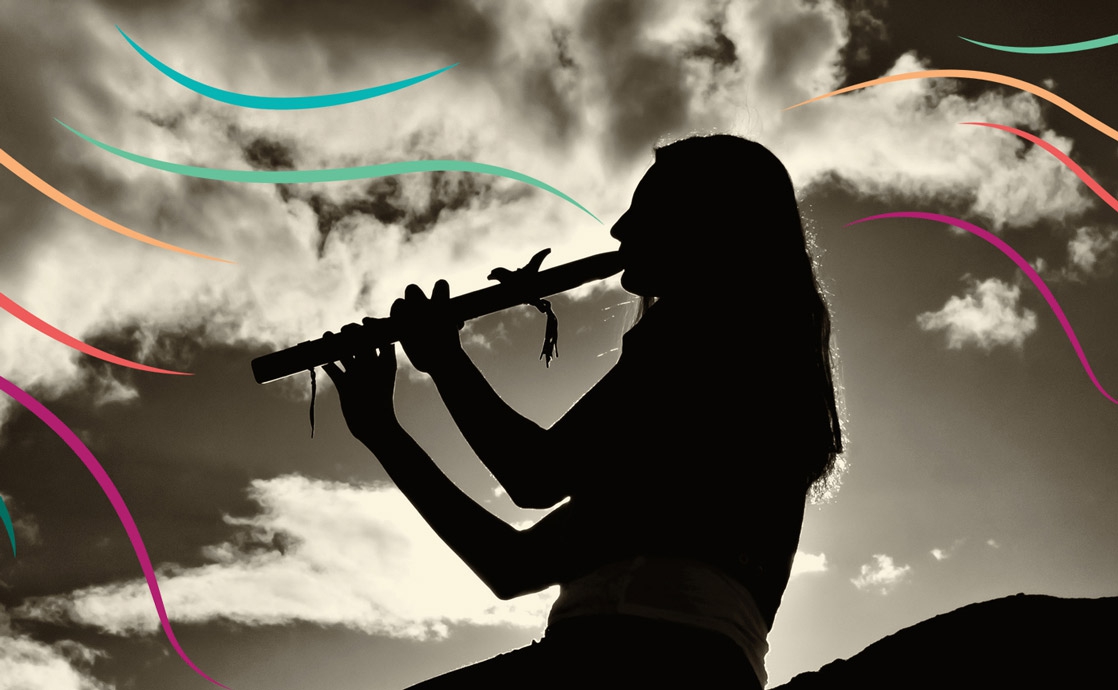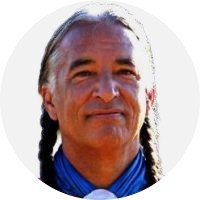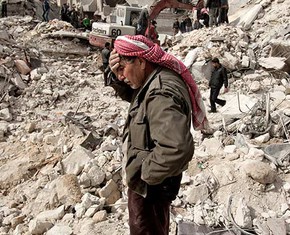The views expressed in our content reflect individual perspectives and do not represent the authoritative views of the Baha'i Faith.
The year 2024 marks the 50th anniversary of the first edition of Vinson Brown’s Voices of Earth and Sky: The Vision Life of the Native Americans, originally published by Stackpole Books (Harrisburg, Pennsylvania) in 1974. See WorldCat, https://search.worldcat.org/title/796935. Two years later, in 1976, Naturegraph republished Voices of Earth and Sky.
This book quickly became known as a pioneering work. It presents information on some of the Indigenous messengers of God described in our series: Deganawida (Haudenosaunee/Iroquois, Chapter 6), White Buffalo Calf Maiden (Lakota, Chapter 7), Sweet Medicine (Cheyenne, Chapter 8), Quetzalcoatl (Toltec, Chapter 9), Viracocha (Inca, Chapter 10). Voices of Earth and Sky treats this topic for its own intrinsic interest and importance, without even mentioning the Baha’i Faith, from what I could tell. According to an article in The Encyclopedia of Religion and Nature:

“Vinson Brown of California was a naturalist and anthropologist, a publisher and author of 37 books, with a life-long interest in and appreciation for Native American cultures and beliefs.”
On August 13, 2020, I received my copy of Voices of Earth and Sky from Barbara Brown, the widow of Vinson Brown, on behalf of the publisher, Naturegraph, the small press which Vinson founded. It feels great to have a copy of this excellent book after all these years!
To give our readers an idea of how the author, Vinson Brown, introduced some of the Indigenous messengers of God, here are couple of excerpts:
“An interesting theory of the Mormons is that Jesus Himself came to America at the time of His crucifixion in the Holy Land and spread His teachings in the New World. Though possible, it seems to me more logical that the Great Spirit would send a messenger to Indians who would be an Indian, but would reflect same high spiritual qualities and teachings.
It is time now to consider individually some of the culture heroes whose lives we know most about. …
Legend tells us that the mysterious prophet founder of this new religion, Deganawidah, left his people soon after the League was formed and traveled eastward in a sacred stone canoe, never to be seen again. But he left the wise and eloquent Hiawatha in charge and he is the one who deserves credit for much of the fine organization of the Iroquois League. Later Jefferson, Adams, Washington, Franklin and other great leaders of the new United States of America used many of the ideas that had flowered in the League of the Iroquois in their framing of the American Constitution, with its careful limitation of powers and its ideals and plans for government for and by the people.
It is very sad that the Iroquois League, founded with such hope for peace between nations … never quite realized the dream of its founder to bring true unity to all the Indian tribes. Though later it became of great military strength and conquered wide areas, the White Roots of Peace were too often forgotten and the Iroquois set out more to dominate than to combine and unify.” – Vinson Brown, Voices of Earth and Sky, pp. 53, 58–59.
Christopher Buck: Kevin, what can you add about the impact of Voices of the Earth and Sky when it was first published back in 1976?
Kevin Locke: I met Vinson Brown before and then again several years after Voices of the Earth and Sky was published. I “discovered” the book on my own and am delighted again to take it up afresh. I have never heard anyone else refer to it and I believe it to be a hidden gem. I think that Vinson Brown was far ahead of his time, in that his soul resonated with the underlying holy overtones of this land and its Indigenous legacy, which inspired him to dig deeper to uncover the Holy Ones who were the basis of this legacy. I very much appreciate that you, Chris, were moved to explore this important work of Vinson Brown.
CB: In what ways was this book important?
KL: Its importance rests on the simple reason that Vinson Brown was a pioneer on the path of immigrant [Euro-American] discovery of the spiritual heritage of this land! As such, Voices of the Earth and Sky charts essential steps on the journey that all non-Indigenous Americans must make to come to terms with the spiritual heritage of this half of the planet — here in the Western Hemisphere, the “Americas” (a Euro-American name), in the so-called “New World” of North, Central, and South America – which we Indigenous peoples call the “Old World.”
Vinson Brown’s intended audience for this book seems to be people like himself – growing up in this country totally disconnected from indigeneity. He describes several anecdotes that transformed his view. In particular, his encounter with a profoundly spiritual Indigenous man of Guaymi heritage (now known as the Ngäbe-Buglé people, comprising over 60 per cent of the Indigenous population in Panama). On page 30, at the end of Chapter 2, Vinson Brown introduced the concept of Indigenous prophets as the source of divine blessings. On page 36, he reviews some of the landmark literature that influenced him. On page 41, he hints about the Baha’i Faith.
CB: Yes, I was part of Vinson Brown’s intended audience when I, too, discovered this “hidden gem” shortly after it was first published. Voices of Earth and Sky made a great impression on me. Vinson Brown introduced me to some of the Indigenous messengers of God – although I had no idea that, four decades later, I’d be collaborating with you in writing this series!
Kevin, you also taught me a new word – indigeneity – so I had to look it up. That led me to this journal article by Francesca Merlan, “Indigeneity: Global and Local,” in Current Anthropology:
“The term indigenous has long been used as a designation distinguishing those who are “native” from their “others” in specific locales and with varying scope. In recent decades, this concept has become internationalized, and “indigeneity” has come to also presuppose a sphere of commonality among those who form a world collectivity of “indigenous peoples” in contrast to their various others. The principal institutional home of international indigenism is within the UN system …” – Volume 50, No. 3 (June 2009), p. 303.
“Indigeneity is taken to imply first-order connections (usually at small scale) between group and locality. It connotes belonging and originariness and deeply felt processes of attachment and identification, and thus it distinguishes “natives” from others. Indigeneity as it has expanded in its meaning to define an international category is taken to refer to peoples who have great moral claims on nation-states and on international society, often because of inhumane, unequal, and exclusionary treatment. Within some of these contexts, there were considerable historical similarities of settlement, colonization, and marginalization of native peoples.” – pp. 303–304.
In the document, “Vinson Brown’s Belief in Native American Messengers,” that Barbara Brown sent me along with the Naturegraph books that I received on August 13, 2020, Barbara writes:
“Basically your question is: did Vinson believe in the Messengers that came to the Natives of the Americas, some centuries ago? Yes, I’m certain that he did. He was a great scholar and perused literally a few hundred books, a great student of the Biblical prophecies and those of the Baha’i Faith, all combined with his scientific training. He saw them as repeated patterns. He was aware that in the Baha’i Faith only prophets of the Old World were mentioned. In Vinson’s reasoning God sends rain to all parts of the world (maybe not too much to the Sahara Desert), so why did He not send Holy Messengers to the Americas? He read many books of prophecy dealing particularly with the Southern Hemisphere, and found that their prophecies predicted centuries earlier, had been accurate to the year (including the coming of Baha’i). You can read about some of these in Voices of Earth and Sky. Others in Tony Shearer’s Lord of the Dawn about Central America and Mexico.
Vinson also believed in the Holy Ones of North America, both from reading and going to talk with older chiefs or medicine men. …
Back to your question: Did Vinson believe in the Native Messengers? I think that he did because he felt it was proof that their ancient prophecies had come to pass (or were still to come in some instances, such as the world peace.) He would not believe in anything he thought was not provable, or scientific. That’s the best I can say for Vinson. I’m not the writer or the studious, so I’m enclosing a few of his books that can speak for him far better than I can.” – Barbara Brown, “Vinson Brown’s Belief in Native American Messengers.”
Kevin, your comments, please?
KL: Apparently Vinson was not aware of Abdu’l-Baha’s “Tablet to Amir Khan” – for Baha’is, the Holy Grail of proof of the appearance of holy souls on this side of the planet. Nonetheless he astutely perceived the deep footprints of the divine ones who had walked this land. Vinson bravely published what he could uncover regarding these Indigenous messengers of God and their universal teachings. Fortunately, because of his family’s interactions and his own personal encounters, he brought to light valuable insights and understandings and made them available for all. I treasure the brief, few times that I personally met Mr. Brown and am thankful that he has enriched us all with his foundational research.
CB: Me, too! I met Vinson Brown in Eugene, Oregon, in either late 1978 or early 1979, when he gave a public lecture at the University of Oregon, not long after he had published Voices of Earth and Sky. He loved this quote from the Baha’i writings:
Attach great importance to the indigenous population of America. … Likewise, these Indians, should they be educated and guided, there can be no doubt that they will become so illumined as to enlighten the whole world.
The authors especially thank Barbara Brown, widow of the late naturalist and anthropologist, Vinson Brown (1912–1991), author of “Voices of Earth and Sky.”

















Comments
Sign in or create an account
Continue with Googleor